The Fillmore Arches
After the 1906 San Francisco earthquake and fire, merchants tried to make Fillmore Street the city's new commercial center with some unique metal arches.
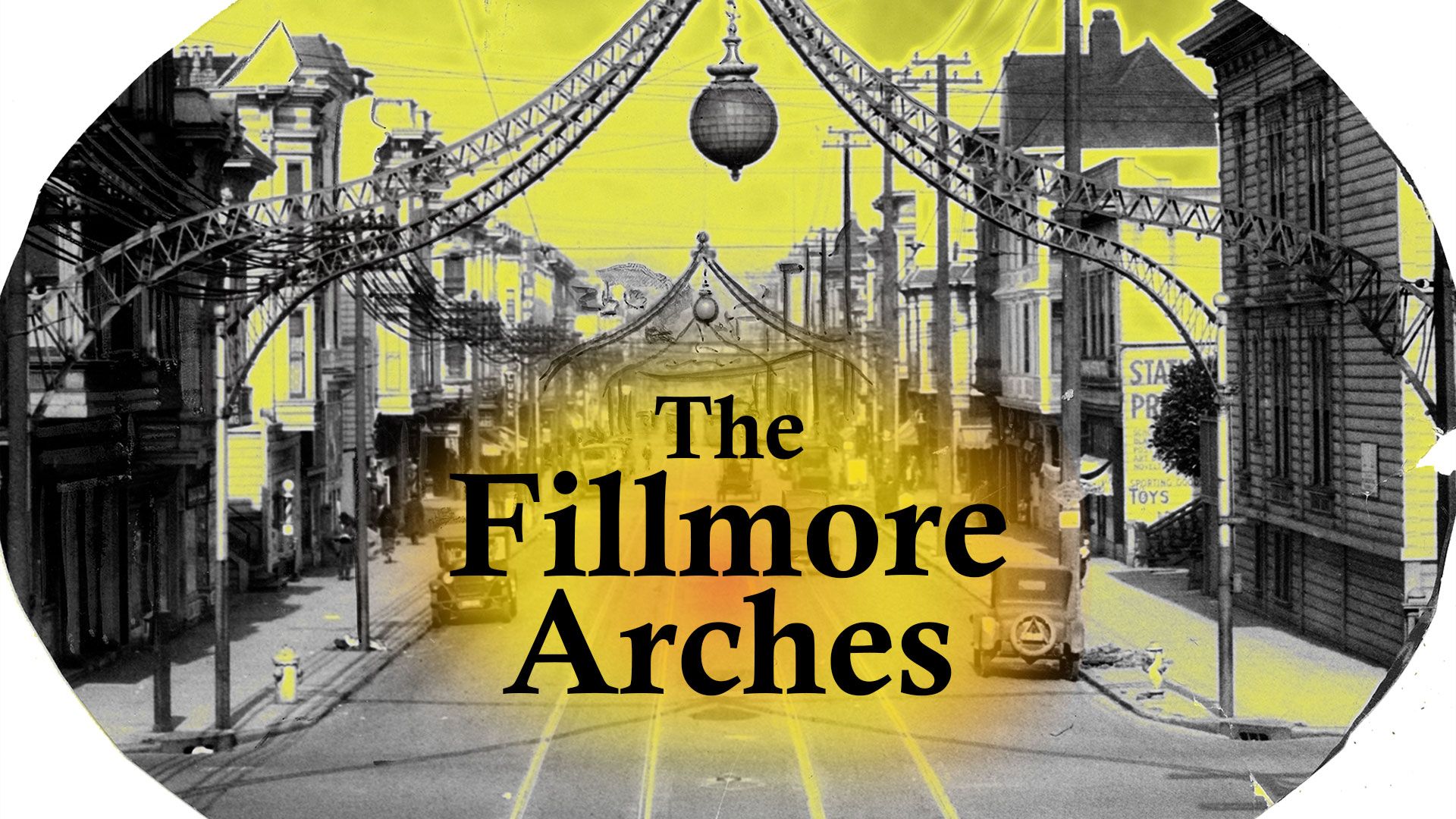
by Woody LaBounty
When the 1906 Earthquake and Fire burned out the heart of the city, including the entertainment and shopping districts, the closest surviving corridor with a streetcar line was Fillmore Street. Burned-out theaters, restaurants, and department stores quickly set up shop on the mostly undamaged Western Addition street within weeks of the great conflagration.
By late 1906, Fillmore Street buzzed as the city’s new hub for shopping, entertainment, and dining. In the words of one writer, Fillmore had transformed “from a row of suburban delicatessen and cigar shops to the main artery of a great city.”
A Fillmore Street Improvement Association formed the week after the earthquake, mostly made up of merchants and businessmen transplanted from the burned zone. While the fronts of old flats were torn out to install business counters and second-floor apartments were remade into restaurants, the association moved to make these investments pay off long-term. The idea of Fillmore Street as a premiere shopping and entertainment strip needed to stick before the rebuilding of the city and a downtown resurgence moved too far along.
In April 1907, the group requested permission from the Board of Supervisors to erect decorative metal arches across 14 intersections of Fillmore Street between Sacramento and Fulton Streets. Fitted with electric lights, the arches were meant to cement in the public consciousness the idea of Fillmore Street as a festive white way of commerce.
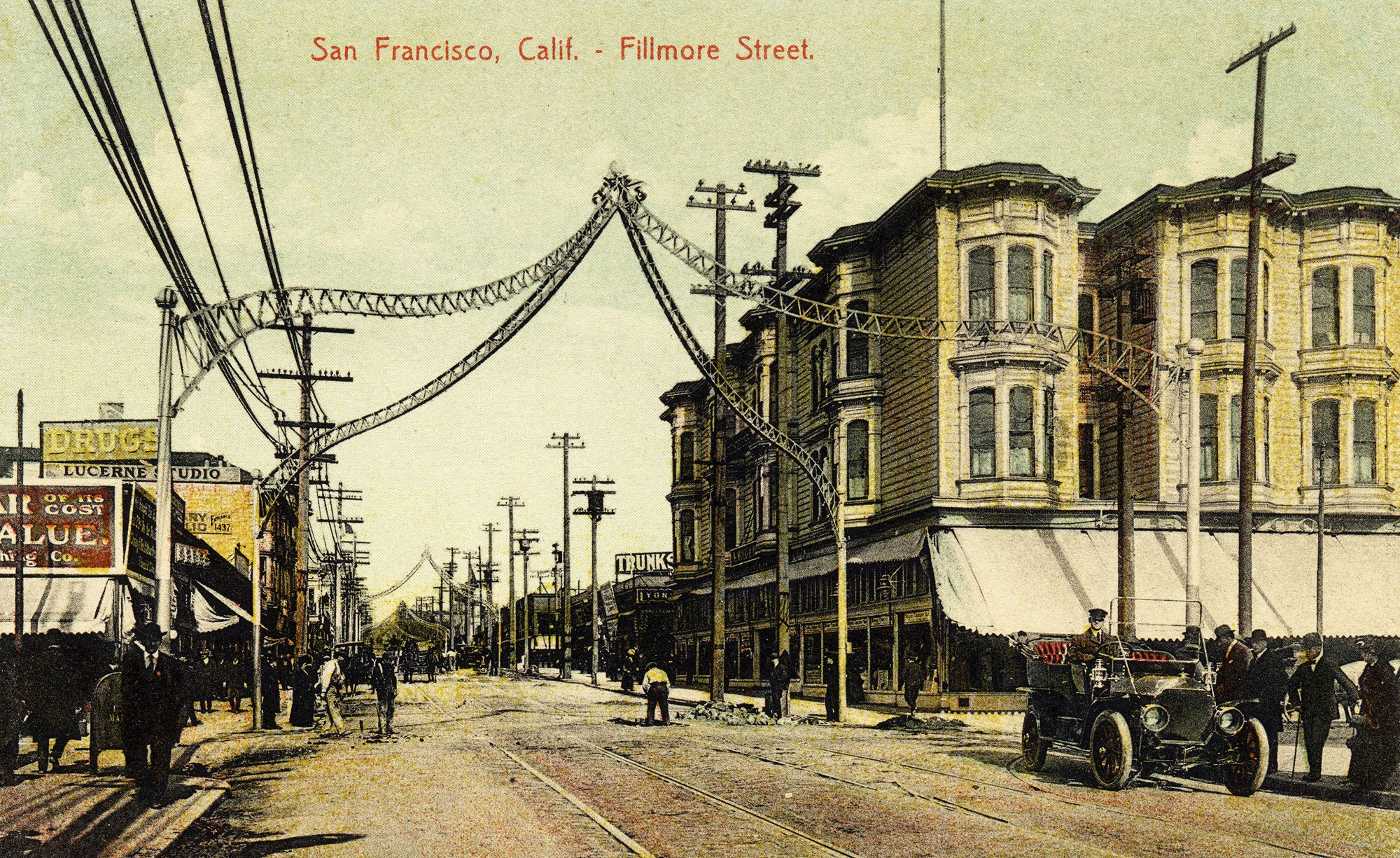
Well-connected requests could be honored quickly at City Hall. Before the month was out the Fillmore association had contracted with Butte Engineering and Electric Company to erect the first arches between California and McAllister Streets for $7,500 ($224,000 in 2022 dollars).
The iron spans were actually double arches crossing diagonally, meeting over the streetcar-line wires 32 feet above the pavement. Lined with 120 lights each, the arches were originally painted white. Illuminated crystal globes dangled from their peaks above the intersections and later the merchants affixed a flagpole from each apex. From a 21st century perspective, the arch design seems fairly insectoid, as if alien invaders chose Fillmore Street for the route of their victory parade.
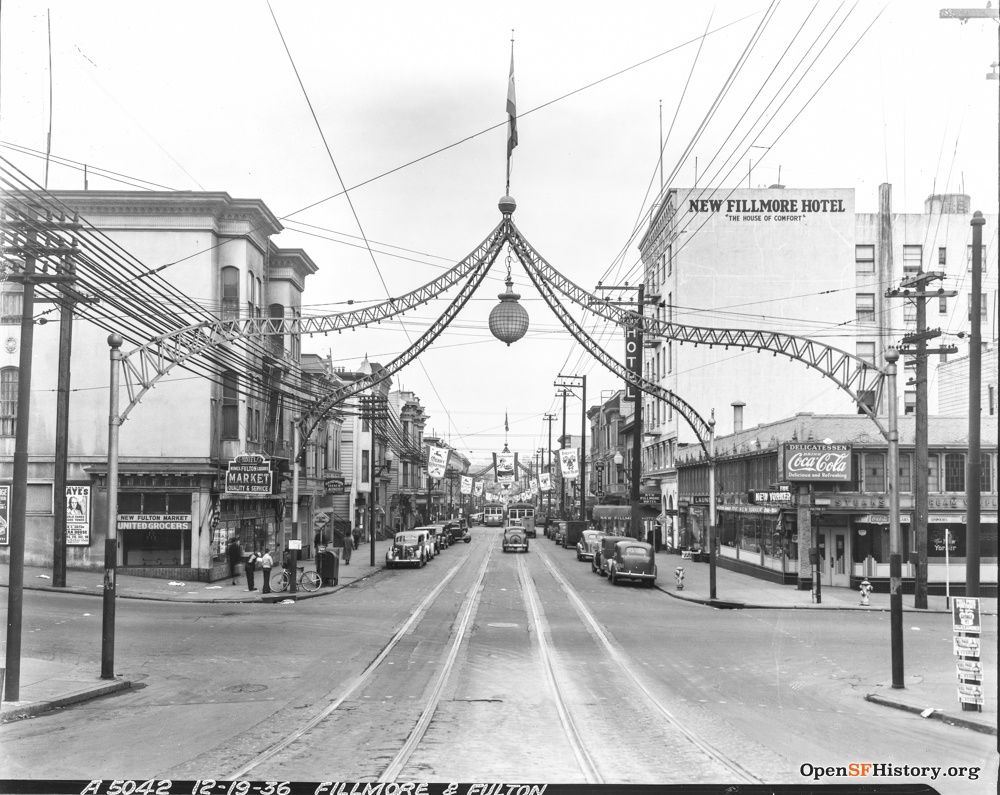
By September 1907, the cost of the project had risen to $11,000, although a promotional ad for the work tossed out the more impressive final number of $50,000. While Fillmore Street merchants and property owners footed the bill to build the arches, the city covered the cost of the electricity, which was not inexpensive.
The first arch was finished and illuminated at Pine and Fillmore Streets on September 9, 1907. The lighting of the entire string took place on November 27, just in time for the holiday shopping season.
The lights brought the people, especially on Saturday nights. Businesses stayed open late. Street preachers, philosophers, and patent-medicine hawkers competed in loud volumes at the intersection of Post and Fillmore to attract the strolling crowds. When the respectable businesses closed their doors for the evening penny arcades, nickelodeons, bars, gambling dens, and playhouses took over.
In July 1908, San Francisco Call feature reporter Gibson Adams spent an evening on Fillmore Street. He paid a quarter for admission to a second-floor dance hall “where ladies of divers nationalities graciously waltzed with me without the formality of names.” The possibilities expanded for him later in the evening. When the arch lights dimmed at midnight he noted walking the street that “two young girls passed by and looked me unabashed and inquiringly in the eye.”
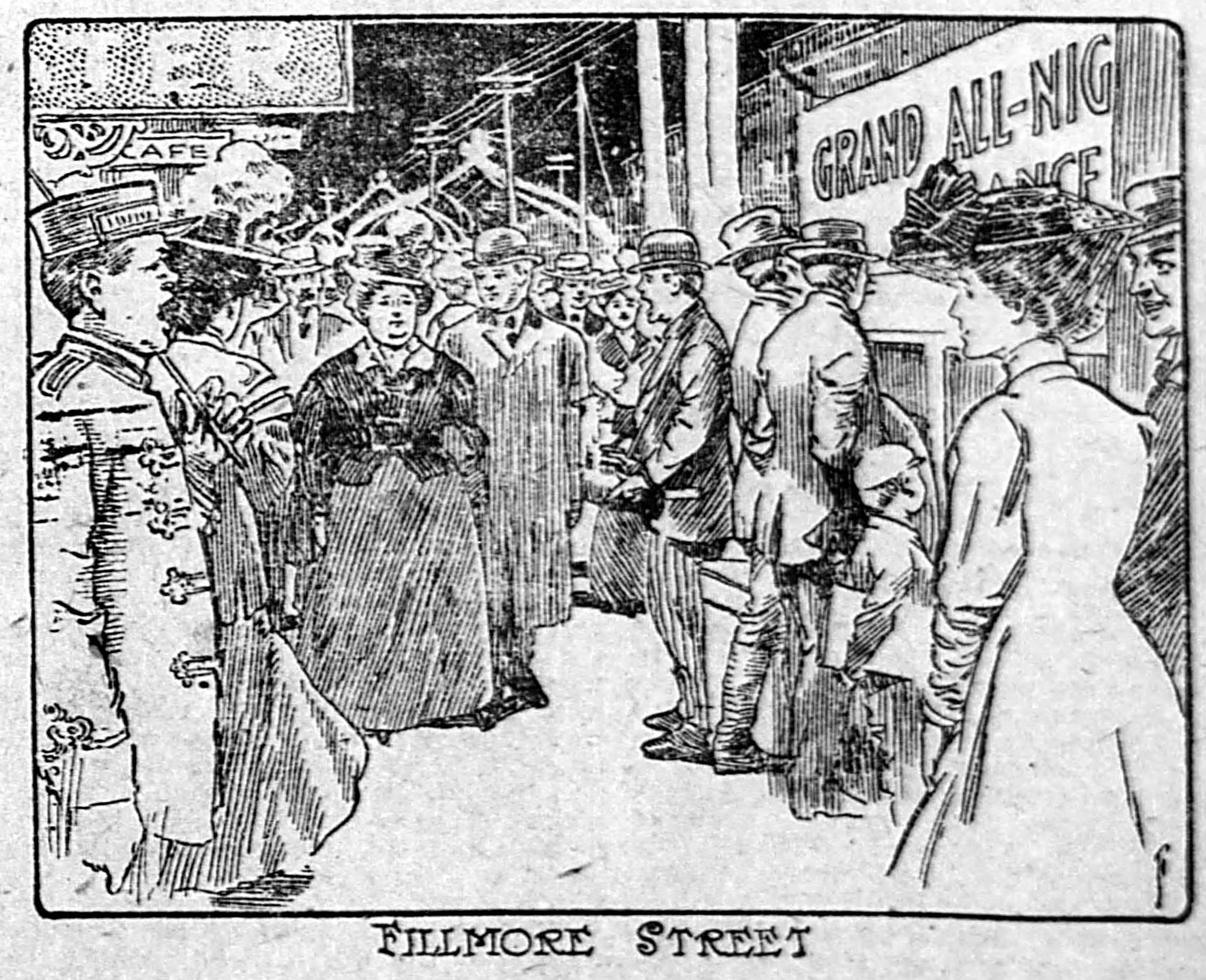
The Fillmore merchants made good use of their distinctive gateways. When the U.S. Navy’s Great White Fleet visited town in 1908 the arches were decorated with naval flags, shields, evergreen boughs and “clusters of poppies.” Models of specific warships sat on pedestals at each corner, strung with even more electric lights. For the Christmas shopping seasons the white light bulbs were switched to red and green. In one promotion the merchants hung 112 flower pots of geraniums from the arches.
Gibson Adams wondered in 1908 whether “old, tough, live, delightful, disreputable, bohemian, fascinating Fillmore street” would pass away when downtown was occupied again. While the avenue stayed active with mostly blue-collar attractions and neighborhood-serving businesses, it predictably lost cachet when the big modern department stores and theaters returned to Union Square.
By the start of World War II the arches were already seen as relics, sometimes misremembered as having something to do with the city’s Portola festival of 1909 or even the Panama Pacific International Exposition of 1915.
In October 1942, agents of the federal War Production Board canvassing the west coast for scrap material took an interest in the 14 metal arches. Wartime black-out and dim-out regulations had already nixed the electric lights. The Fillmore Merchants Association agreed to give up its arches as long as new streetlights were installed.
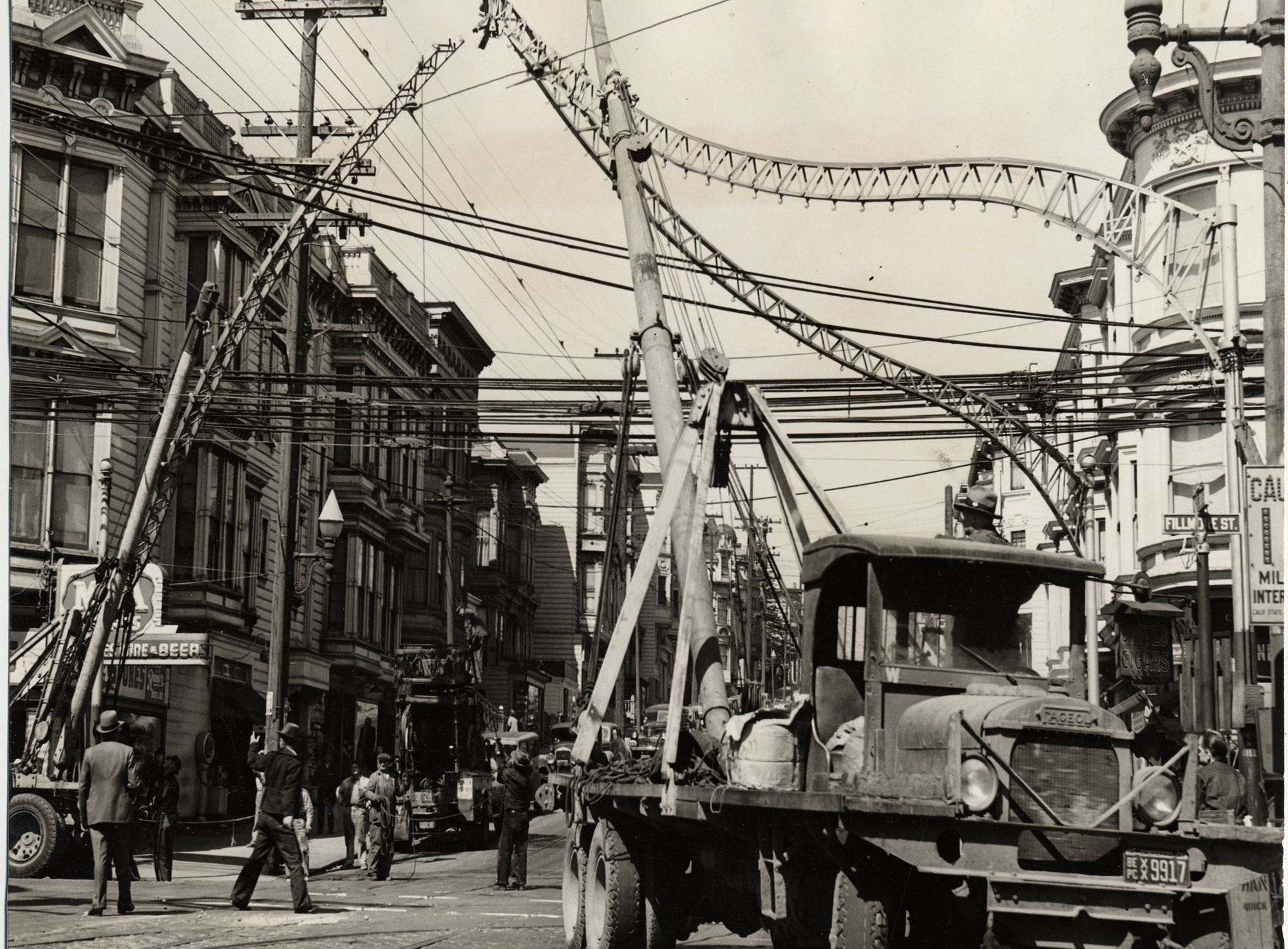
The following June, rigging crews dismantled the iconic arches “in furtherance of the war effort.” Propaganda campaigns insinuated such scrap made the wings on a B-29 or sections of a warship’s hull. Likely the fate of the arches was less romantic. The job of pulling down and carting away the iron insect legs took less than two weeks.
Perhaps someday Fillmore will be again known for arches. In November 2016, the Fillmore Merchants Association proposed putting up a new gateway span, still fairly bug-like in design.
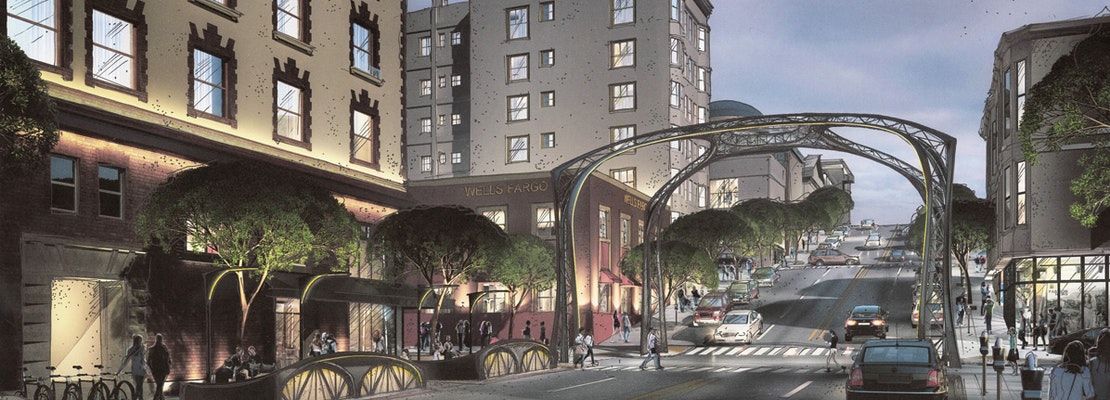
Sources
“Light Fillmore Street,” San Francisco Examiner, April 14, 1907, pg. 14.
San Francisco Call, April 28, 1907, pg. 59.
“Double Arches to Light Corners on Fillmore St.,” San Francisco Examiner, September 6, 1907, pg. 6; Ad, San Francisco Examiner, September 10, 1907, pg. 8.
“Light and Music Start a New Era,” San Francisco Examiner, September 10, 1907, pg. 8.
“Make Fillmore New White Way,” San Francisco Chronicle, November 28, 1907, pg. 5.
“An All-Night Prowl in a City that Never Sleeps,” San Francisco Call, July 5, 1908, pg. 4.
“Fillmore Street Will Decorate for Fleet,” San Francisco Chronicle, April 14, 1908, pg. 9.
C. F. Adams, “How Fillmore Street Has Been Made Retail Center,” San Francisco Call, January 14, 1911, pg. 11.
“Army Truck Will Aid Scrap Drive in S. F.,” San Francisco Examiner, October 2, 1942, pg. 6.
“Fillmore St. Scraps Arches,” San Francisco Examiner, June 4, 1943, pg. 30.

